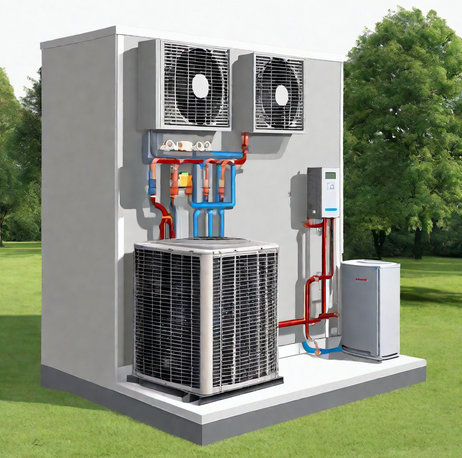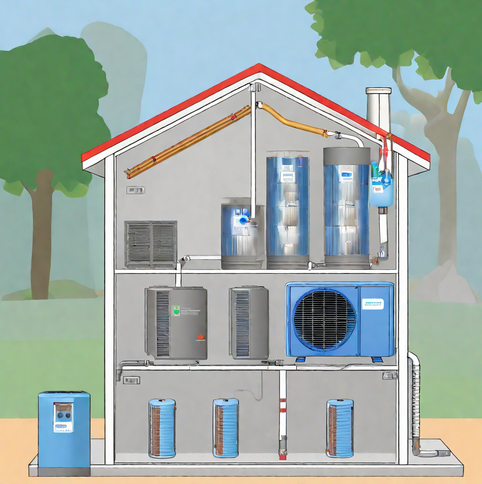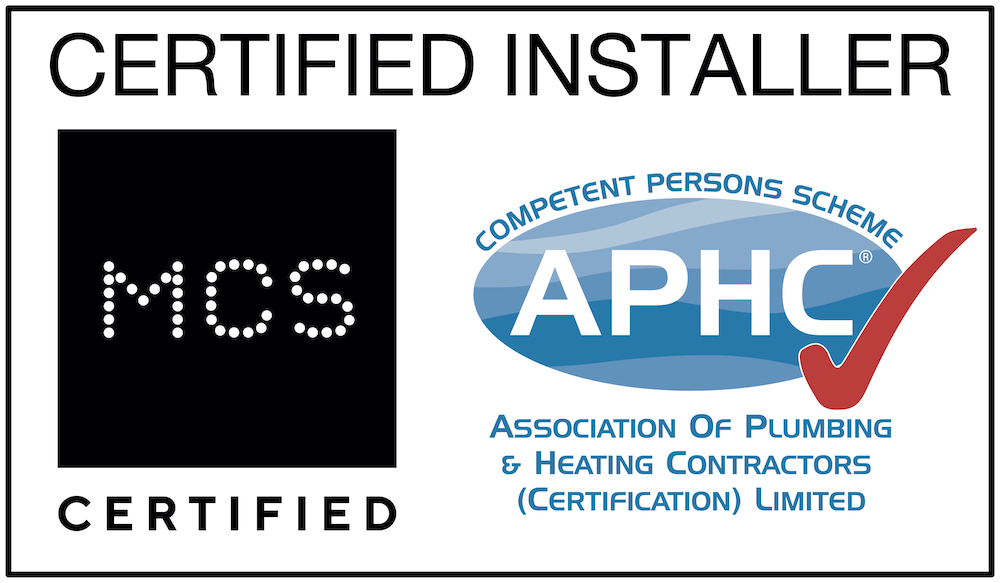Operation Guide | Air Source Heat Pump Diagram
December 1, 2023
Navigating the complexities of installing and operating an air-source heat pump can be daunting. Surprisingly, these devices account for about 3% of all UK home heating, a figure expected to rise with growing environmental concerns.
This guide will simplify everything you need to know, from installation tips to troubleshooting common issues and running your heat pump efficiently. Ready to demystify some technical terms?

It works like a fridge, but for your whole house! These pumps help you save money on heating bills. Plus, they are good for our planet because they need less power than other heaters.
Types of air source heat pumps
There are different types of air-source heat pumps available for your home. The most common type is the air-to-air heat pump, which transfers heat from outside to inside your home using a refrigerant.
This type of heat pump can provide both heating and cooling.
Another option is the air-to-water heat pump, which uses outdoor air to heat water that can be used for central heating or even hot water in your home. This type of heat pump is more suitable for homes with radiators or underfloor heating systems.
If you live in a colder climate, you might consider a cold-climate heat pump. These pumps are designed to work efficiently even when temperatures drop below freezing.
Installation Process
When installing an air source heat pump, it is important to follow best practices and position it properly for optimal performance.
Best practices and tips
To ensure a successful installation of your air source heat pump, there are some best practices and tips to keep in mind. First, it is important to hire a professional installer who has experience with heat pumps.
They will know the proper positioning and sizing for your specific needs. Additionally, make sure to follow the manufacturer’s instructions and guidelines provided in the user manual or installation guide.
This will help you achieve peak efficiency and optimal performance from your heat pump. During the installation process, pay attention to details such as proper wiring and connections, as any errors can impact its operation.

Proper positioning and sizing
To ensure optimal performance, it is important to position and size your air source heat pump correctly. The positioning of the heat pump should be in an area that has good airflow and is free from obstructions.
This will allow the heat pump to take in and release air efficiently. It is also essential to consider its proximity to your home or building, as well as any noise restrictions.
In terms of size, it is crucial to choose a heat pump that matches the heating needs of your space. A professional installer can help determine the appropriate size based on factors such as insulation levels, room sizes, and climate conditions.
Oversized or undersized units can result in poor efficiency and unnecessary energy consumption.
Operation and Maintenance
In this section, we will discuss how to use and maintain your air source heat pump to ensure optimal performance.
How to use the heat pump
To use the heat pump, start by setting the desired temperature on the heat pump controller. The controller allows you to adjust the heating mode, fan speed, and timer settings. Make sure to choose energy-efficient temperature settings to maximise efficiency and reduce costs.
Once you’ve made your adjustments, simply let the heat pump do its job of providing warm air or water throughout your home. If you need further assistance or have any questions about operating the heat pump, refer to your user manual or contact a professional installer for guidance.
Regularly check and maintain the heat pump filters and outdoor unit for optimal performance.
Regular maintenance procedures
To keep your air source heat pump running efficiently, regular maintenance is important. Here are some simple procedures to follow:
1. Clean or replace the filters regularly to ensure good airflow and prevent dirt from entering the system.
2. Check the outdoor unit regularly for any debris or leaves that may have accumulated around it. Clear away any obstructions to maintain proper ventilation.
3. Inspect the fins and coils for any signs of damage or corrosion. If needed, gently clean them with a soft brush or hose them off with water.
4. Keep an eye on the condensate drain line and make sure it is clear of blockages. A blocked drain can cause water leakage and affect your heat pump’s performance.
Troubleshooting common issues
If you encounter any problems with your air source heat pump, there are some common issues that you can troubleshoot. Firstly, check if the power is turned on and if the circuit breaker hasn’t tripped.
If the heat pump isn’t producing enough heat or cool air, make sure that the temperature settings are correct. Additionally, check if the outdoor unit is free of debris and obstructions.
If you notice strange noises or leaks, it might be due to a faulty part or refrigerant leak, so contact a professional installer for assistance. Regular maintenance will help prevent these issues, so make sure to clean or replace filters as needed and schedule annual inspections with a certified technician.
Cost and Environmental Impact
Air source heat pumps offer significant cost savings and environmental benefits. Users can expect to see a reduction in their energy bills, as these systems are highly efficient and use renewable energy sources.
Additionally, by replacing traditional heating systems with air-source heat pumps, carbon emissions can be reduced, contributing to a more sustainable future. Various government incentives and grants are also available to encourage the adoption of these eco-friendly heating solutions.
Cost savings
One of the significant benefits of installing an air-source heat pump is the potential for cost savings. Air source heat pumps are highly efficient and can help reduce your energy bills compared to traditional heating systems.
They work by extracting heat from the outside air, even in colder temperatures, and transferring it into your home. This means that you can enjoy a warm and comfortable living environment while using less energy.
Additionally, there are government incentives and grants available that can further offset the installation costs of an air-source heat pump. By choosing this renewable energy source, not only will you save money in the long run, but you’ll also contribute to reducing carbon emissions and creating a more sustainable future.
Reducing carbon emissions
By installing an air source heat pump, you can significantly reduce carbon emissions. These heat pumps operate using renewable energy from the air, which means they don’t rely on fossil fuels like traditional heating systems.
By switching to a more sustainable heating solution, you’ll be doing your part in reducing greenhouse gas emissions and helping combat climate change. Additionally, many governments offer incentives and grants for installing heat pumps as a way to promote their environmental benefits.
So not only will you be saving money on your energy bills, but you’ll also be contributing to a cleaner and greener future.
Government incentives and grants
Did you know that the government offers incentives and grants for installing air-source heat pumps? These financial benefits can help offset the upfront costs and make it more affordable for homeowners.
By choosing an energy-efficient heating system like an air source heat pump, you not only save on your utility bills but also contribute to reducing carbon emissions. The government recognises this and provides incentives in the form of grants or tax credits to encourage homeowners to adopt renewable energy sources.
These incentives vary depending on where you live, so it’s worth checking with your local authorities or energy providers to see what programmes are available in your area. Installing an air source heat pump not only saves you money but also helps create a sustainable future by reducing reliance on fossil fuels.
Conclusion
In conclusion, understanding how to operate and maintain your air source heat pump is crucial for maximising its benefits. By following the proper installation process and best practices, you can ensure peak efficiency and cost savings.
Regular maintenance and troubleshooting of common issues will help keep your heat pump running smoothly. Plus, by using an air-source heat pump, you contribute to reducing carbon emissions and promoting sustainable heating options.


